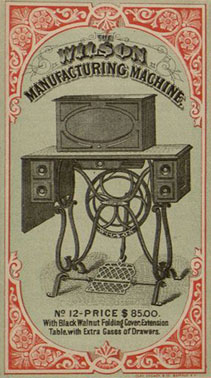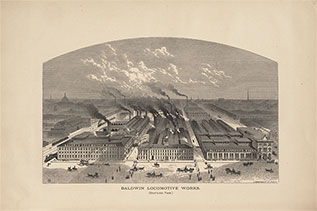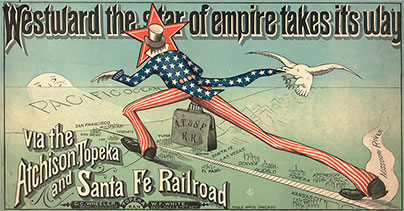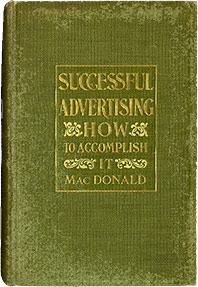The Art of American Advertising:
National Markets
“The dramatic expansions in population, wealth, income, and territory that characterized the United States in the nineteenth century paralleled equally dramatic expansions in the size and character of markets for both consumer and industrial goods.”Pamela Walker Laird, Advertising Progress: American Business and the Rise of Consumer Marketing , 19982
In the American economy of the early 1800s, many household items, such as soap or clothing, were made at home and other generic products were available locally at a general store, small shop, or through itinerant peddlers. Retailers distributed basic goods, for example textiles and grains, to general merchants, while regional enterprises manufactured products such as tractors and looms. Given the steady demand for these goods, their generic nature, and their local distribution, there was little need to advertise or to differentiate one product from another. Face-to-face selling remained one of the predominant forms of marketing as it had been for centuries.
A dramatic shift in the mid-nineteenth century, driven in part by the rapid growth of the railroad industry, forever changed the American marketplace. Over 240,000 miles of track laid across the country from 1830 to 1910 required the quick and efficient production of railroad equipment and supplies. This thriving new industry created the model for modern big business and mass production of goods. The railroads, along with the steamship and telegraph, also made possible the national distribution of products through an interconnected network of cities and towns. Singer Sewing Machines manufactured in New Jersey, for example, could now be shipped to California.
The growth in population coupled with a rise in per capita income and a more educated public also contributed to the creation of a consumer culture. Within this emerging national market, it fell to the advertiser to encourage consumers to buy goods not necessarily produced locally and to convince them of the superiority of one product over another. “Household routines involved making fewer things and purchasing more; consumption became a major part of the work of the household,” cultural historian Susan Strasser asserts. “Formerly customers, purchasing the objects of daily life from familiar craftspeople and storekeepers, Americans became consumers. They bought and used mass-produced goods as participants in a national market.”3
A block of soap previously made at home or bought in bulk at the general store now materialized before the customer as a highly advertised, distinctively packaged item emblazoned with a brand name. In 1890, the trade journal Inland Printer proclaimed the critical new role of printing in advertising: “The manufacturer once made everything in one shop, and sold to everybody near him. The consumer . . . must now use the products of numerous and remote manufacturers. . . . Only the printer’s ink can bridge the distance, and bring the producer and consumer into relations of intimacy.”4
2 Pamela Walker Laird, Advertising Progress: American Business and the Rise of Consumer Marketing. Baltimore: John Hopkins University Press, 1998, p. 15.
3 Susan Strasser, Satisfaction Guaranteed: The Making of the American Mass Market. New York: Pantheon Books, 1989, pp. 15-16.
4 E.P. Harris, “Random Thoughts on Trade and Advertising,” Inland Printer 8 (December 1890): 202.



